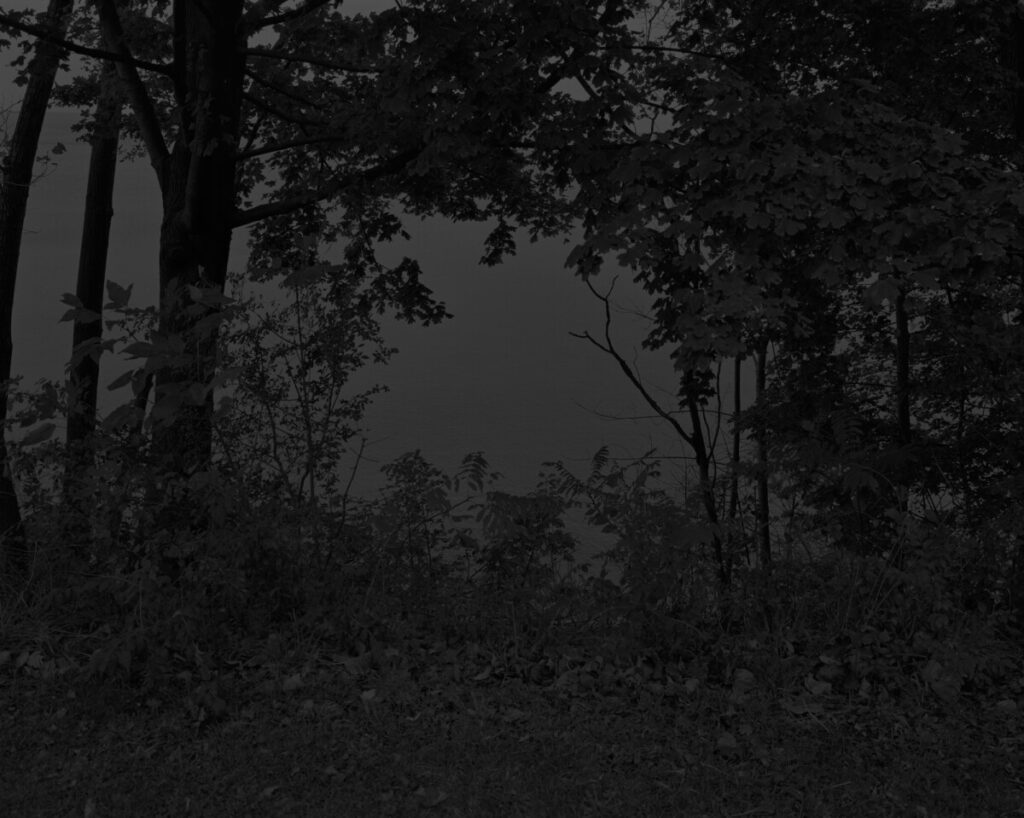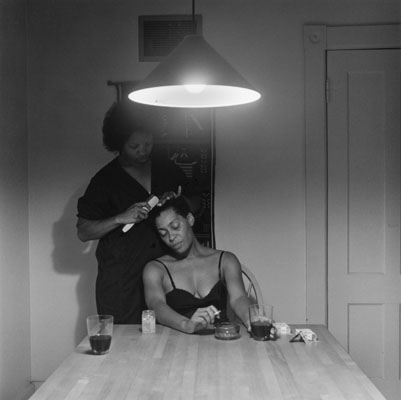Photography had great personal meaning for Dawoud Bey and the camera was a way for him to have a voice in the world. Being someone with hearing loss, Bey sees and notices more than most people, therefore, the usage of photography allows him to express his ideas and voice them through his eyes. One of his projects, Night Coming Tenderly, Black, Bey extended his view into the past and focused on a radical re-imagining of history while specifically focusing on that of the Underground Railroad. These photographs were dark and mysterious, in hopes of placing the viewer in the eyes of fugitive slaves that were moving in the woods and landscapes surrounded by darkness. It was to show the audience how the feeling would have been like, having to navigate through unfamiliar land to freedom. This photograph below in particular, was taken in a spot overlooking Lake Erie. Bey explained that while he was in this location, he knew he had come to something important. He didn’t have to hope to feel some type of authenticity in the area so that he could get a connection in the photographs, instead, he actually felt a very strong presence once he got there. It was unlike other sites he had been to and Bey was well aware that this wasn’t an imagined feeling, that it was an actual location related to his project on the Underground Railroad.

In her body of work, The Kitchen Table Series, Carrie Mae Weems captures all the photographs in one spot being her own kitchen, with one light source hanging over her kitchen table. She wanted to dive into the sense of what would be a voice for African American women, or women in general, in a “space of domesticity that have historically belonged to women”. Weems puts out the question, “how do we begin to alter the domestic space, the social living arrangement, the social contract, how does that get changed?” She questions the relationship and connection of one another, of how life can be complex but has to still be adjusted to. This project captures moments and memories at that table, displaying “the battle around the family”, mainly focusing on a woman’s life as a friend, a wife, a lover, a mother, and an individual. Each scene and moment is around this kitchen table, which is stereotypical and generally tied to being a woman’s domain. In this photograph below, there are two individuals captured and being in the center of the image and under the lighting, the woman sitting down is the one telling the story. We can feel the sense of stress and emotion on her face, a feeling of being bareness and vulnerability. It’s something that she doesn’t usually show around her husband or children but being with another fellow woman, she has the chance to express herself without the tensions of holding a role. This woman seems to be having her hair taken care of by her friend, showing us that she also needs to be looked after by another, not just a one-way role when she typically tends for her family. She’s also sitting in the center chair, with usually is left for the male figure to be seated, thus, shows that in this situation, she’s the main character of the moment being taken.

The approaches of “finding your voice” that Dawoud Bey and Carrie Mae Weems delivers can be similar and different. They both use photography as a tool to capture moments that people can relate to. In a sense, they use the photographs as a memory of an event that can be historical or can still be contemporary, but both being something that has happened in someone’s life. Picking out the differences, Dawoud Bey captures moments from what happened a long time ago, within the eyes of people who have been affected to a great extent. He uses this idea of a voice to allow the audience to experience what changed many people’s lives. Carrie Mae Weems, on the other hand, tends to capture moments that can be reoccurring to the present day, while still displaying a relatable connection to a more narrowed audience, being women.




Well stated. Bey’s series Night Coming Tenderly, Black does place us in the position of fugitive slaves, helping us to feel what they must have felt.
I agree that Weems did not just want to show domestic relationships but to change them.
Weems made the Kitchen Table series in 1990, 30 years ago and yet as you say above, it is the present day. It is still “relatable.”